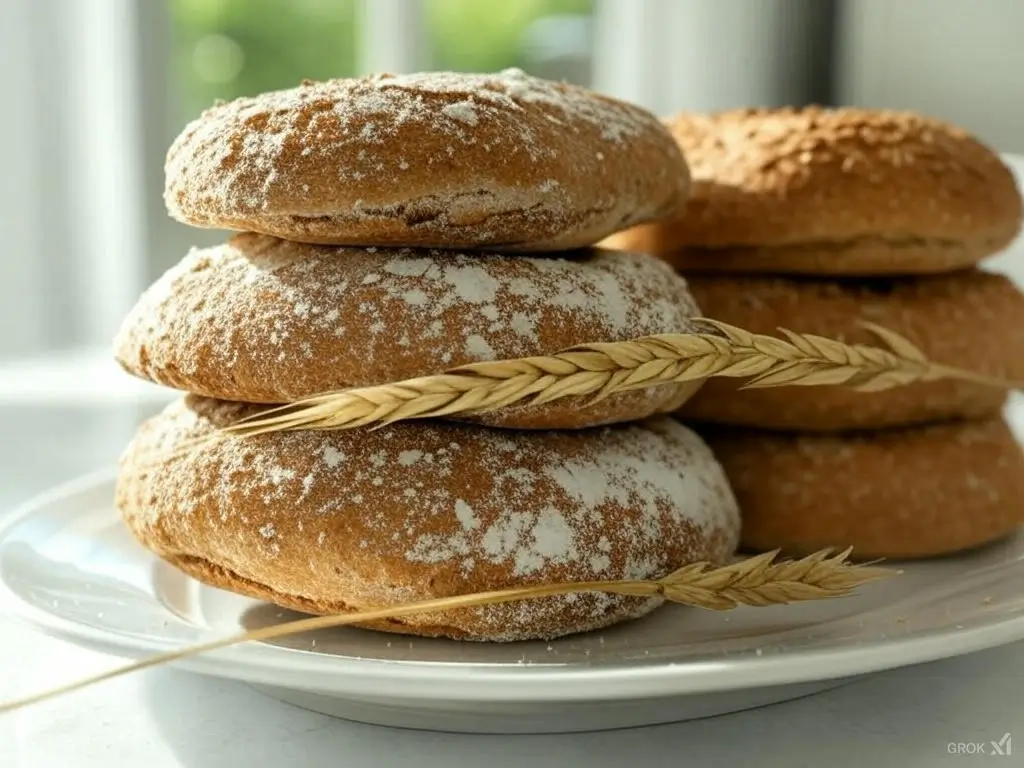Foodies worldwide often ask why Italians skip cheese on fish pasta. This article unravels the mystery behind this classic Italian custom. We explore seafood pasta traditions, examine historical influences, and track global flavor evolutions. By highlighting the no-cheese-with-fish rule, you’ll discover how delicate seafood flavors shine in coastal Italian cooking. We also discuss possible exceptions, FAQs, and modern views that keep these customs relevant. Buckle up for a mouthwatering dive into history, culinary science, and cultural pride!
Introduction to “No Cheese on Fish Pasta” Tradition
Historical Context of the “Why Don’t Italians Put Cheese on Fish Pasta?” Rule
Historical Context of the Italian Seafood-Only Rule Ancient culinary practices shaped the Italian seafood-only rule in coastal regions. Fishermen relied on fresh seafood as their main protein, and these briny ingredients naturally complemented the Mediterranean palate. Meanwhile, Parmesan cheese and other dairy products fit better with land-based dishes like meats and hearty sauces. Over time, this separation became a cornerstone of Mediterranean culinary heritage. People adored the subtle sweetness of fresh seafood, which contrasted sharply with the bold creaminess of cheese.
As traders traveled throughout Italy, they introduced new spices and cheese varieties. Yet these dairy flavors clashed with seafood’s delicate profile. Recipes like authentic spaghetti alle vongole reinforced a strong bond between pasta, tomatoes, herbs, and sea-based ingredients. They also avoided cheese. Generations upheld this unwritten rule so fish dishes could shine without the intrusion of dairy notes.
The Role of Authentic Italian Regional Influences A practical method of showcasing the day’s fresh catch evolved into a pillar of regional Italian cooking. From tiny fishing villages to bustling ports, cooks developed varied seafood pasta styles that reflect each locale. Their guiding principle remained simple: preserve nature’s flavors. In Sicily, swordfish steaks typically appear without cheese. In Campania, clams and mussels often reach the table without dairy toppings. Thus, the question “Why don’t Italians put cheese on fish pasta?” stems from a commitment to purity and a devotion to centuries-old coastal traditions.
Tinned Fish Pasta: Quick, Tasty Super Budget-Friendly Meals
The Evolution of Italian Culinary Etiquette and the No-Cheese Tradition

Ancient Roman Roots: Why Italians Still Skip Cheese on Fish Pasta
Ancient Roman Roots and Early Cheese Use From ancient Rome onward, Italians have celebrated meticulous food rituals that shaped Mediterranean cuisine. Historians note that Romans adored cheese, featuring it prominently at grand banquets. However, they usually served fish apart from dairy-based fare, believing herbs and olive oil enhanced fresh seafood more than heavy cheese. This tradition became a hallmark of Italian gastronomy, laying the groundwork for the no-cheese-with-fish custom. While some households indulged in dairy sauces for special occasions, many families clung to the unaltered taste of local catch.
From Medieval to Modern Day: Maintaining the Seafood Pasta Tradition
During the medieval era, trade routes introduced new spices and cheeses, but coastal communities guarded their seafood recipes. They favored garlic, tomatoes, and fresh herbs over cheese to preserve local authenticity. Evolving Catholic traditions also reinforced these choices. On certain feast days, people replaced meat and cheese with fish, putting marine fare center stage. Even today, the question “Why don’t Italians put cheese on fish pasta?” reveals a tapestry of beliefs passed from generation to generation. Most chefs still adhere to these practices because cheese can overpower instead of enhance seafood. As a result, Italy’s cheese-free fish dishes endure as living reminders of time-honored customs grounded in taste and tradition.
The Science of Pairing Fish and Cheese
Flavor Profiles and Texture Considerations
Science offers more clues about “Why don’t Italians put cheese on fish pasta?” Fresh fish often brings subtle salty and sweet notes that dairy can overwhelm. Cheese usually has a bold, tangy, or creamy taste with a heavier mouthfeel. When combined, these elements might clash and create an unbalanced dish. Pairing fish and cheese can also lead to unpleasant aromas—something coastal Italian cooking avoids. In contrast, the seafood pasta tradition values bright, clean flavors like lemon, white wine, or fresh herbs that enhance the ocean’s essence.
How Cheese Can Overpower Delicate Seafood
Strong cheeses like Parmesan or Pecorino Romano pack an intense punch. They can drown out the delicate nuances of clams, mussels, or shrimp. By skipping cheese, Italians protect the briny taste travelers love. Many chefs also note that lightly cooked fish is softer and stands apart from robust dairy products. Many experts claim that mixing fish pasta with cheese merges two competing flavor worlds. Ultimately, preserving seafood and pasta’s unique synergy ensures the dish tastes fresh. This explains why food lovers—and especially Italians—keep cheese out of the picture.
Why Don’t Italians Put Cheese on Fish Pasta?
Respecting Traditional Italian Seafood Pasta
Some folks still wonder, Why don’t Italians put cheese on fish pasta? Unsurprisingly, the historical background plays a central role. Indeed, Italians treat their Italian fish dishes with great respect, knowing that cheese could overwhelm the delicate seafood flavor. Specifically, many cooks grew up seeing grandparents and parents diligently craft authentic spaghetti alle vongole—a staple that proves cheese isn’t always the best companion for fish. Moreover, chefs realized long ago that the briny essence of clams or shrimp simply pairs better with olive oil, garlic, and perhaps a dash of white wine. Consequently, this age-old preference became a widely accepted social norm.
Additionally, communities from Sicily all the way to Liguria work to protect these time-honored traditions. They believe fish pasta recipes highlight the seafood pasta tradition in a pure way. Indeed, using ingredients like sun-ripened tomatoes and fresh basil can accentuate the oceanic notes far more effectively than any cheese. As a result, modern Italians maintain the no cheese with fish rule, claiming it catches the true spirit of coastal Italian cooking. For more delicious recipes, check out our recipe article.
Preserving the Unique Taste of the Sea
Moreover, a core belief among Italians is that fish shouldn’t be crowded by bold, tangy flavors. In particular, Parmesan cheese and other hard varieties can smother the subtle tastes of flaky cod or succulent mussels. Therefore, most classic fish pasta recipes avoid heavy dairy to protect the dish’s fresh character. Naturally, people who appreciate lighter fare find this tradition enticing. They might notice that every bite bursts with coastal ambiance. Because of this, diners can enjoy fish pasta as an homage to Mediterranean culinary heritage instead of drowning it in cheese.
Regional Variations in Seafood Pasta Recipes
Signature Dishes from Italian Coastal Regions
Italy’s coastal regions each boast signature seafood pasta recipes shaped by local ingredients and centuries of ancient culinary practices. For instance, restaurants near Naples showcase linguine with clams, where pristine shellfish meet juicy cherry tomatoes. Meanwhile, in Sardinia, local cooks feature fresh octopus with handmade pasta, highlighting the region’s bounty of ocean delicacies. Since these areas rest close to the water, families use fish caught that same day, which intensifies the flavors. Unsurprisingly, Italians in these regions rarely add cheese, convinced it would ruin the harmony of fresh seafood. Consequently, such dishes celebrate the ocean’s riches while embodying true Italian gastronomic heritage.
Alternative Ingredients That Enhance Flavor Without Cheese
To satisfy a more adventurous palate, some Italians supplement their recipes with clever alternatives that keep dairy off the table. Indeed, crushed nuts—like almonds or pine nuts—deliver a subtle crunch, while fresh parsley or basil punches up the aroma and color. Additionally, lemon zest offers a bright, tangy kick without overshadowing delicate fish. Because of these versatile options, it becomes easier to see why don’t Italians put cheese on fish pasta? The quest to preserve marine notes while providing a rich culinary experience drives cooks to embrace these thoughtful substitutions. Moreover, the absence of cheese forces creative flair, making each region’s spin on seafood pasta truly unforgettable.
Exceptions to the Rule – When Cheese Might Be Acceptable
Regional Idiosyncrasies and Rare Combinations
Occasionally, you’ll find that some Italian regions flirt with bending the no cheese with fish rule. While most locals avoid topping fish-based sauce variations with dairy, certain remote mountain-coastal areas occasionally experiment with fresh goat cheese or mild ricotta. This twist often surfaces where chefs combine local traditions, adding small dollops of cheese only to balance out spicy notes. Even so, such combinations remain rare, keeping the spotlight on why they follow time-honored standbys instead of switching to cheese-laden recipes.
Additionally, feasts for special celebrations may lead certain families to break convention with subtle dairy additions. They might cite a well-guarded family recipe passed down for generations—proving that Italian cuisine can be wonderfully diverse. However, devout foodies still wonder: Why don t Italians put cheese on fish pasta? It’s because these exceptions are few and far between. In most homes and restaurants, diners tend to view cheese-laden seafood as unorthodox, if not outright prohibited. More often than not, people fear losing the crisp, briny flavor of the sea. Consequently, even if cheese occasionally appears in local interpretations, it rarely stands as the rule. Thus, embracing these exceptions takes courage, but preserving tradition usually comes first.
Innovative Takes from Modern Italian Chefs
Meanwhile, some contemporary chefs toy with new, less intense cheeses—like burrata—served minimally or on the side. By doing so, they offer curious eaters a chance to judge the pairing themselves. This approach aims to highlight novelty without permanently tossing tradition aside. Still, many of these chefs caution patrons about overshadowing the delicate seafood flavor. Indeed, in most cases, that “just a taste” approach aligns with the main reason Why don t Italians put cheese on fish pasta? Namely, to keep the dish’s essence intact, ensuring each bite radiates the ocean’s charm.
Debunking Common Myths About Cheese on Fish Pasta
Is the “No Cheese on Fish” Rule Absolute?
Contrary to popular belief, this rule isn’t always set in stone. While Italians customarily avoid dairy in fish-based pasta, certain home cooks have been known to make small adjustments. For instance, they might sprinkle a Parmesan cheese garnish over fish pasta if it ties the flavors together. Still, most purists frown upon such behavior, arguing that adding cheese downplays centuries of Mediterranean culinary heritage. In truth, the question Why don t Italians put cheese on fish pasta? yields varied answers. Some believe it’s strictly about balancing tastes, while others think it’s an artistic choice that pays tribute to culinary ancestors.
Exploring Cultural Contexts and Personal Preferences
Furthermore, it’s crucial to acknowledge that personal taste often shapes food practices. Although many prefer traditional habits, a small but growing group of foodies encourage experimentation—sometimes defending a sprinkling of mild cheese if used sparingly. Even so, loving your fish pasta without any cheese remains the standard among Italians, especially those who treasure authentic spaghetti alle vongole and other classic dishes. Ultimately, whether you opt for cheese or not might hinge on upbringing, local norms, and the environment in which you taste these dishes. Nonetheless, maintaining the dish’s marine identity stands at the heart of the no cheese with fish rule, keeping pastas vibrant, balanced, and unmistakably Italian every time.
Expert Opinions and Recommendations
What Renowned Italian Chefs Say
Many famous Italian chefs strongly support the no cheese with fish rule. Indeed, they claim it respects centuries of Mediterranean culinary heritage and preserves the essence of fresh seafood. Moreover, they warn that bold dairy can mask the subtle sweetness of clams or the pleasant brine of mussels. Consequently, top-rated restaurants in Italy often embrace classic seafood pasta recipes without a single shred of cheese. Yet, a minority of trailblazing chefs experiment with light, fresh cheese or creative garnishes. In truth, these moves spark debates, since purists argue it shifts attention away from marine flavors. Still, these progressive chefs defend their methods by pointing to evolving tastes in modern food culture.
Practical Tips for Perfecting Your Seafood Pasta Without Cheese
First, always select the freshest fish or shellfish you can find. Next, rely on the balanced blend of garlic, onions, white wine, and herbs to elevate your dish. Then, accentuate the delicate seafood flavor with ingredients like lemon zest or chili flakes that enhance rather than smother taste. Alternatively, try mixing in capers, olives, or sun-dried tomatoes for extra bursts of brininess. Most importantly, avoid heavy cream sauces since they often have the same overpowering effect as cheese. Ultimately, if you still wonder Why don t Italians put cheese on fish pasta?, recall that Italians believe a clean, ocean-forward flavor profile truly triumphs.
FAQs:
Can Parmesan Ever Be Used on Seafood Pasta Without Breaking Tradition?
Some home cooks slip a small sprinkle of Parmesan cheese onto a fish-based pasta without stirring up too much controversy. However, most Italians still discourage the practice because hard cheese can overwhelm that delicate seafood flavor. Although a few regional recipes bend this guideline, overall tradition stands firm, continuously reminding us why don t Italians put cheese on fish pasta? They strive to keep the scene bright, fresh, and truly reflective of the sea’s bounty.
Is Cheese on Fish Pasta Really a Culinary Faux Pas in Italy?
Yes, yet the degree of faux pas can vary. In general, Italians treat it as a major culinary misstep, especially in regions where locals value time-tested seafood pasta traditions. Nevertheless, some modern establishments experiment with mild mascarpone or ricotta, hoping to achieve a subtle hint of creaminess. Even then, they remain careful with portions so they don’t overshadow the fish. Furthermore, many food lovers feel that preserving the dish’s coastal character is more important than experimenting with dairy. Thus, whether you consider cheese a brazen intrusion or a casual addition often depends on personal taste, heritage, and respect for coastal Italian cooking.
Conclusion
Key Takeaways from the Italian Fish Pasta Tradition
In conclusion, the mystery behind “Why don’t Italians put cheese on fish pasta?” reflects centuries of culinary heritage. Italians uphold practicality and a reverence for fresh seafood flavors. By passing down ancient culinary practices through countless generations, Italians emphasize the delicate seafood flavor that reverberates along their coasts. Consequently, their seafood pasta tradition preserves the taste of the sea, letting ingredients shine and upholding centuries of coastal cooking. Some curious chefs explore new ingredients. Still, the soul of classic Italian fish dishes remains anchored in the longstanding “no cheese with fish” custom. Indeed, this dining code celebrates the region’s bounty rather than drowning it in heavy dairy notes.
Preserving Authentic Italian Culinary Experiences
Italians recognize that purity in each dish keeps their gastronomic heritage alive. They carefully select fresh fish, vegetables, herbs, and oils to balance flavor and tradition. Although a few culinary rebels experiment with light cheese sparingly, faithful cooks still prioritize a clean, oceanic profile. Whether you savor authentic spaghetti alle vongole or another cherished recipe, the emphasis stays on pairing pasta with pristine fish. Ultimately, taste, harmony, and local pride answer the core question: Why don’t Italians put cheese on fish pasta? They honor time-tested methods that spotlight the ocean’s gifts.






